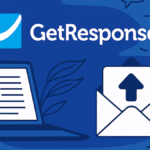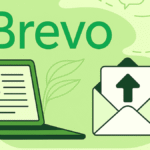Expanding your business into new, global markets offers massive potential. But, it also raises various challenges. No matter how well known you are locally, or even nationally, you won’t necessarily enjoy the benefits of this when you do try and expand. You’re not quite starting again. You have the infrastructure and the basic processes, after all, but you will need to make changes and redouble your efforts.
Below, we look at 11 tips to help take local PR international.
1. Make The Most Of Technology
One obstacle you will face when embarking on internation PR is geo-blocking. Some governments prohibit access to outsiders, while some websites only access to local IP addresses. This can be overcome with a VPN. The top VPN picks will let you connect to the Internet using servers based around the world so you can make it appear as though you’re in that country, circumventing geo-restrictions.
Software reviews expert Aleksandar Stevanovic also points to the fact that using a VPN enables you to view local news sites and even analytics and data aggregators as though you are from that country, meaning a VPN will prove essential when doing local research.
2. Don’t Assume
Just because a particular strategy worked for you in one market, doesn’t mean it will work in another. You can use the same basic processes you have in place to research, compile, publish, and monitor results. You may even be able to connect with media outlets, influencers, and other potential partners using the same techniques, but you will need to use new data: data that is relevant to your new market.
3. Research Your Target Market
You need to have a deep understanding of local markets. This means researching your target clients or customers, rules and regulations, and how the market acts and reacts. Look at successful campaigns, determine which companies are doing well in the market you’re entering, and find local trusted media outlets.
Just because Google and YouTube are popular in the US, doesn’t mean they’re the best choice in markets like Central Africa. The BBC is the biggest media outlet in the UK but is lesser known in other countries. This is information you need to learn.
4. Research Your Competitors
Determine who the major players are in your industry, in your new markets. Look at their PR efforts, compare your target markets, and see where, when, and how they are using PR. You can glean a lot of information from your competitors and you can this information to help ensure the success of your PR campaign.
5. Find Local Partners
A PR campaign lives and dies by the strength of your PR partners. You likely have a good network of local journalists and promoters in your area and can leverage this network to gain the kind of coverage you need. You will need to develop similar networks in every new market you enter, too.
6. Make It Relevant
Your last local PR campaign likely won’t be the best option in a new market. Research local events, find local news stories, and speak to your target market to find pressure points and selling points. With this information, you can craft successful PR launches. Targeted PR campaigns are more likely to be picked up by the media, disseminated by local journalists, and shared by your targets.
7. Use Global Issues
Alternatively, you can use global issues that affect everybody, although you do need to tread carefully to ensure you understand local sensibilities. Climate change is a significant event that everybody is aware of, and countless experts can give their take on the subject. If it is relevant to your business and what you offer, this could provide a great PR opportunity. AI and the global financial crisis are other topics that affect everybody and can present you with PR opportunities.
8. Ensure Good Translation
Don’t place the future of your business on the shoulders of Google Translate. Employ professional translation services to ensure your message is being delivered how you want it to be. Local translators don’t simply translate content word for word. They can change idioms and colloquialisms to those that locals would use. They can identify any terms or elements of your message that might be considered offensive, removing the risk of alienating your target market.
9. Leverage Different Forms Of Media
Don’t put all of your eggs in one basket. Using different forms of media means you can get your message out to different groups of people. It also reinforces your message and ensures that your brand sticks out and is more memorable.
- Owned Media – Owned media is the media you or your business owns. This includes your website, YouTube channel, and social media posts. You have the most control over owned media and it is the most accessible.
- Paid Media – Paid media includes pay-per-click ads, sponsored posts, paid influencers, TV spots, radio ads, and newspaper ads. Paid media isn’t as accessible as owned media, but you are paying for the advertising which means you do have a lot of control over what can be published and when, but you need to keep an eye on the costs you’re incurring. You can also support your paid media using your owned media, for example by using QR codes or direct links to your social media pages.
- Earned Media – Earned media is any content on any medium that you haven’t had to pay for and you haven’t created yourself. For example, if a local news agency writes about your business expanding into their territory, that’s earned media. Guest posts, which do not incur payment, can be considered a form of earned media. Although you write the content yourself, you haven’t paid for its placement, and it is your reputation or voice that has earned that spot.
- Shared Media – Shared media can be very powerful, but it is difficult to predict and can be one of the most unreliable types of media. When somebody shares your blog post or your YouTube video, that’s shared media. Viral messages can generate a ton of new interest, but some companies invest a lot of money with no end results.
10. Measure Results
Determine your Key Performance Indicators and measure them. Measure everything that leads up to your KPIs, too. This way you can identify where your money is going, whether that money is generating a decent return, and you can find areas for improvement within your marketing campaigns.
11. Go Again
You’re unlikely to crack an entirely new market with a single PR campaign, so use your results and analytics to improve your campaigns and go again. The more PR campaigns you run, the more your brand will be seen, and you can become recognized even in a new market on the other side of the world.
Conclusion
International PR campaigns can effectively launch your brand in new markets, but they do pose certain challenges. Do extensive research, connect with local journalists and influencers, and combine media types to get the best overall results. And, once a campaign ends, analyze the results, make improvements, and go again.










